Understanding the Central Dogma of Molecular Biology
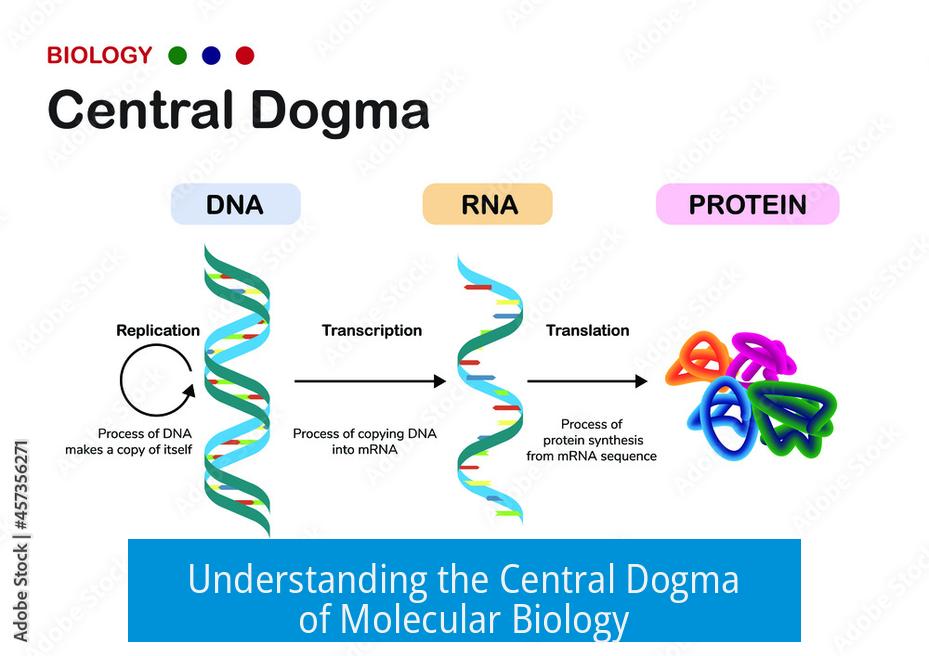
The central dogma describes the flow of genetic information from DNA to RNA to proteins, highlighting a unidirectional transfer essential for protein synthesis, while recognizing exceptions and complexities beyond this simplified model.
Basic Definition and Overview
The central dogma outlines how proteins are built using DNA’s genetic information. It simplifies the complex molecular biology processes into three core steps:
- DNA is transcribed into messenger RNA (mRNA).
- mRNA is translated into proteins.
This model helps visualize the critical path of protein production but does not encompass every transcription event or all RNA biological functions. For instance, various RNA types regulate gene expression and do not directly translate into proteins.
The Original Concept by Francis Crick
Francis Crick first proposed the central dogma in 1958, describing the sequential transfer of genetic information. The dogma states that information flows from nucleic acid to nucleic acid or nucleic acid to protein, but never from protein back to nucleic acid or protein. Crick’s exact wording focused on the “residue-by-residue transfer of sequential information.”
Importantly, Crick’s original definition does not forbid DNA replication (DNA to DNA) or reverse transcription (RNA to DNA). These processes stay within the framework of nucleic acid information transfer, which the dogma accepts.
Common Misinterpretations
Many textbooks present an oversimplified version of the central dogma: strictly DNA → RNA → Protein, ignoring processes like reverse transcription. This simplification originated from interpretations by James Watson and others, but it is not the definitive version given by Crick.
The popular rendition often neglects retroviruses and reverse transcriptase enzymes, which can convert RNA back into DNA. Yet, the true dogma only excludes feedback from proteins back to nucleic acids.
Exceptions and Expanded Views
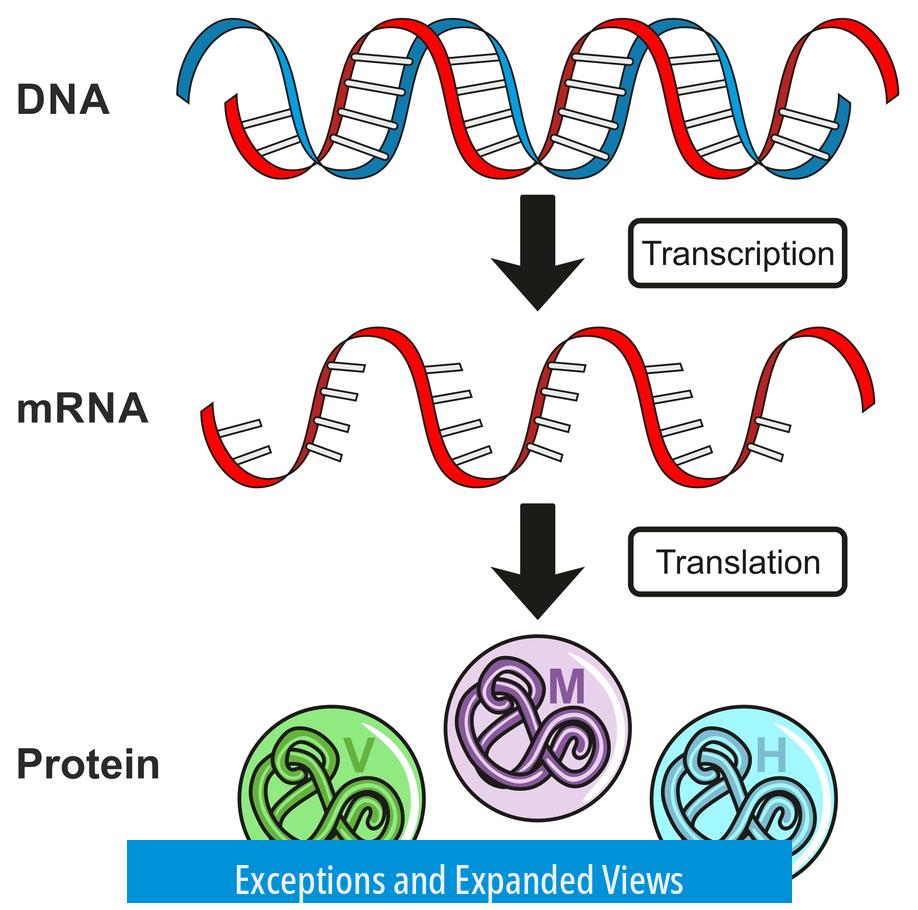
Biological research has uncovered exceptions to strict one-way information flow. Retroviruses, such as HIV, use reverse transcriptase to copy RNA genomes into DNA, integrating into the host genome.
Such RNA → DNA information transfer is compatible with Crick’s dogma and illustrates the complexity of genetic information flows.
Despite exceptions, the central dogma remains widely applicable; its general principle that proteins do not store or transfer genetic sequence information holds true.
Practical Importance in Molecular Biology
The central dogma serves as a valuable rule of thumb in experimental biology. For example, when a protein fails to express:
- If mRNA is absent, the issue lies in transcription (DNA to RNA).
- If mRNA is present but protein is missing, translation (RNA to protein) is faulty.
This guidance helps researchers pinpoint molecular problems and design experiments to study gene expression.
Educational and Conceptual Utility
Though simplified, the central dogma remains an effective educational tool. It provides a foundational framework for students to grasp molecular genetics and protein synthesis. The concept is easy to learn yet complex to master fully.
Comprehending the dogma facilitates understanding broader topics such as gene regulation, mutation effects, and cellular function. It clarifies that DNA acts as the genetic “program,” RNA serves as the “message,” and proteins perform critical cellular roles.
Metaphorical Representation
The central dogma can be thought of metaphorically to help learning:
| Molecule | Role | Metaphor |
|---|---|---|
| DNA | Stores genetic information | Programmer |
| RNA | Copies and transfers information | Programming code |
| Amino Acids | Building blocks of proteins | Programming language |
| Proteins | Functional cellular molecules | Program output |
| Cells | Host of biological activity | Computer |
Summary of Key Points
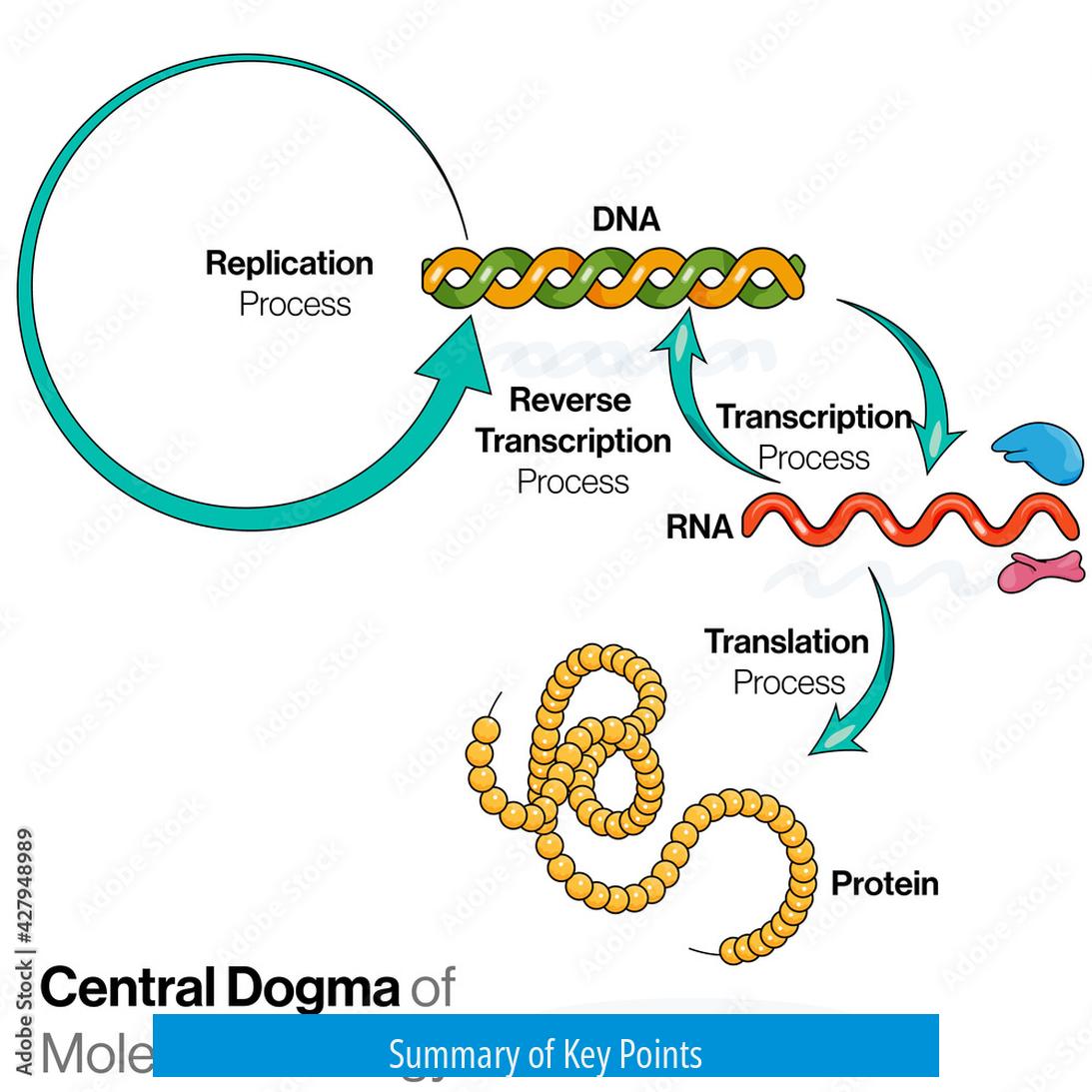
- The central dogma illustrates the flow of genetic information: DNA → RNA → Protein.
- Crick’s original definition excludes protein-to-nucleic-acid information transfer but allows DNA replication and reverse transcription.
- Common depictions oversimplify by ignoring exceptions such as RNA-to-DNA transfer by retroviruses.
- This concept aids troubleshooting in molecular biology, distinguishing transcription from translation errors.
- The dogma is a practical educational tool, essential for understanding genetics and protein synthesis.
- Metaphorical explanations help visualize the molecular roles in gene expression.
Unpacking the Central Dogma: More Than Just DNA to Protein
The central dogma of molecular biology states the flow of genetic information from DNA to mRNA, then to protein. This principle underpins how cells make proteins, the workhorses of life. But is this all there is to it? Not quite.
Most remember the phrase “DNA makes RNA makes protein” from school. It’s simple, neat, and easy to recall — a perfect soundbite for exams. Yet, this simplification misses the deeper twists of molecular biology. So, why does the central dogma still hold such power in biology today? Let’s break it down.
The Original Idea: Francis Crick’s Vision
It all began with Francis Crick, one of DNA’s discoverers. His 1970 paper clarified the central dogma precisely:
“The central dogma… deals with the detailed residue-by-residue transfer of sequential information. It states that such information cannot be transferred back from protein to either protein or nucleic acid.”
Notice what Crick emphatically ruled out — no reverse flow of information from proteins back to DNA or RNA. However, he did not shut down DNA-to-DNA or RNA-to-DNA transfers. Yes, DNA copying itself or RNA influencing DNA are not violations.
This precision is often lost, substituted by simpler but inaccurate versions, wrongly telling us that information avalanches strictly one-way with no exceptions.
Why the Simplified Version Still Rules Classrooms
Despite these nuances, the simplification remains popular and useful. It acts as a “rule of thumb” when troubleshooting biological problems. For example, if a protein isn’t showing up in your experiment, you first check the mRNA. No mRNA? Then transcription could be at fault. mRNA is present but no protein? Translation might be the problem.
This approach works because, for most genes and cells under normal conditions, the central dogma flow neatly guides us:
- DNA → transcription → mRNA
- mRNA → translation → protein
It sets a clear path to diagnose failures in laboratory or medical settings. The dogma is a check-list for where things might go wrong.
RNA to DNA: The Exception That’s Not an Exception
But wait — what about retroviruses like HIV? These crafty invaders reverse the flow, turning RNA back into DNA using reverse transcriptase enzymes. Does this break the central dogma?
Nope. Crick’s original definition anticipated this possibility. RNA-to-DNA transfer doesn’t violate the principle that proteins don’t transfer sequence information back to nucleic acids. It simply means biology is wonderfully flexible.
Why Call It a ‘Dogma’ Then?
The term “dogma” might sound rigid, and that’s the source of confusion. Scientists often joke that dogmas are things even scientists stop believing in! Here, “dogma” meant a strong hypothesis about directional flow of genetic information — but not an ironclad law without exceptions.
Biology thrives on exceptions, from epigenetics to RNA editing. The central dogma captures the essence but not every nuance. Think of it as a skeleton to hang the intricate, twisting form of genetics on.
Seeing the Central Dogma as a Computer Program
Imagine your cell as a computer:
- DNA is the programmer writing instructions.
- RNA acts as the code or script taking these instructions and preparing them.
- Amino acids are the programming language—building blocks.
- Proteins are the executed program, performing functions.
- The cell is the computer running the whole operation.
This metaphor highlights how DNA’s information shapes everything. Mutate the programmer, and the program may crash. Change the amino acids, and proteins might work differently or not at all.
Why Should You Care About the Central Dogma’s Nuance?
If you’re a student or researcher, knowing the full story saves headaches. When a protein isn’t behaving as expected, don’t just stop at the textbook flow. Consider reverse transcription or RNA processing roles, like alternative splicing or RNA interference—things outside the simple dogma.
For educators, presenting the central dogma as a neat pathway risks missing the fascinating complexity biology offers. Yet, it remains a solid foundation—a starting point before diving into RNA tricks or protein feedback loops.
Wrapping It Up: A Beautifully Useful Oversimplification
The central dogma remains the backbone of molecular genetics education and practical work. It’s a guidepost, not gospel. Yes, exceptions exist. Yes, RNA can go backward to DNA. But the flow from DNA to protein captures a truth that helps millions grasp how life functions. The key is remembering it’s a theme, not a rulebook.
So next time you hear “DNA → RNA → Protein,” smile knowingly. You’re in on the biological secret: it’s true, but also only part of the story. Biology, after all, loves to keep us curious.
What does the original Central Dogma by Francis Crick state about information flow?
Crick’s Central Dogma says genetic information moves residue by residue and cannot transfer from proteins back to nucleic acids or proteins. It allows DNA to DNA and RNA to DNA transfers but excludes protein-to-nucleic acid flow.
Why is the common DNA -> RNA -> Protein model considered oversimplified?
This model ignores processes like RNA to DNA transfer and other exceptions. It misses nuances like reverse transcription and RNA replication, so it shouldn’t be seen as a complete representation of genetic information flow.
How does the Central Dogma help in troubleshooting protein expression?
By following the Central Dogma, if a protein isn’t made, you can check if mRNA is present. Absence of mRNA suggests a transcription issue; presence means translation might be faulty. It guides where to look in the process.
Are there exceptions to the Central Dogma?
Yes, retroviruses demonstrate RNA-to-DNA transfer, which is an exception. Biology has many exceptions, but they don’t disprove the general rule of one-way information flow from DNA to protein.
Why is the Central Dogma still useful despite its exceptions?
It offers a clear framework for understanding genetic information flow in cells. While simplified, it helps students and scientists grasp core concepts that connect many biological processes.
How can the roles of DNA, RNA, and proteins be metaphorically understood?
Think of DNA as the programmer, RNA as the programming code, amino acids as the language, proteins as the final program, and the cell as the computer executing the program.


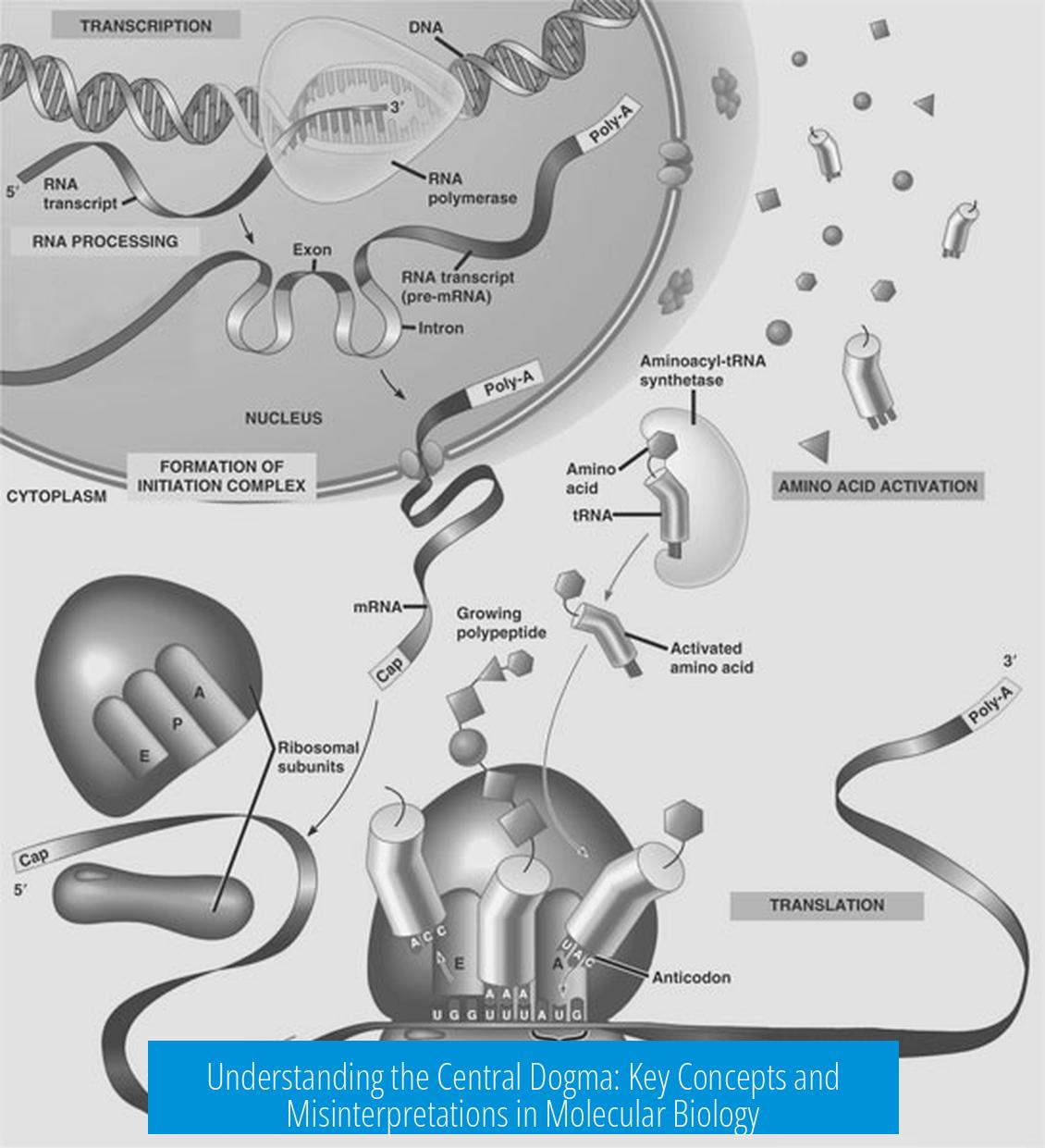
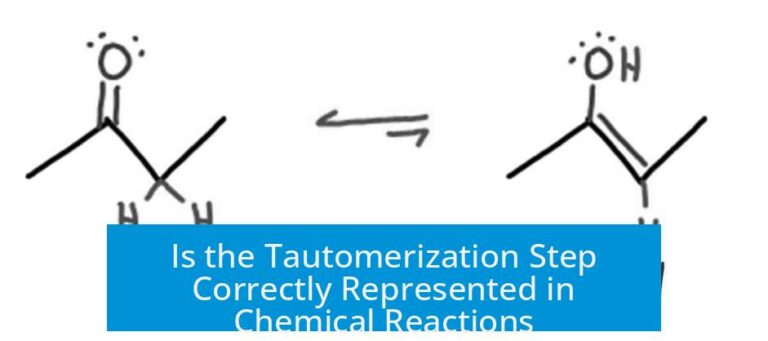

Leave a Comment